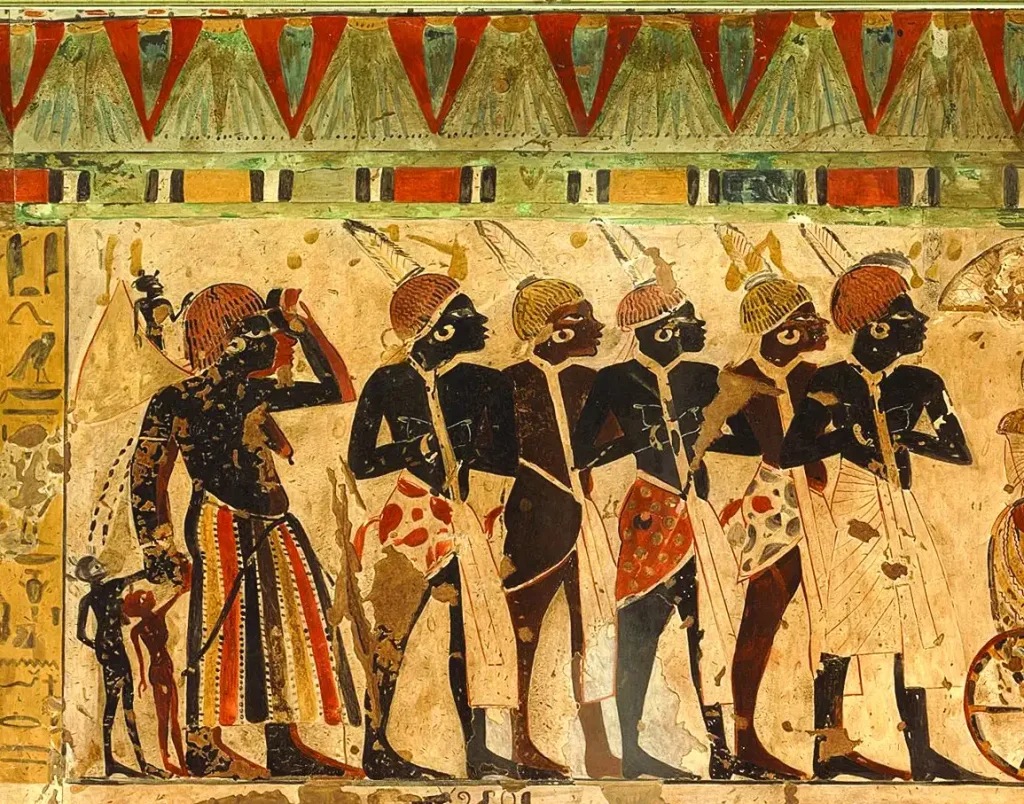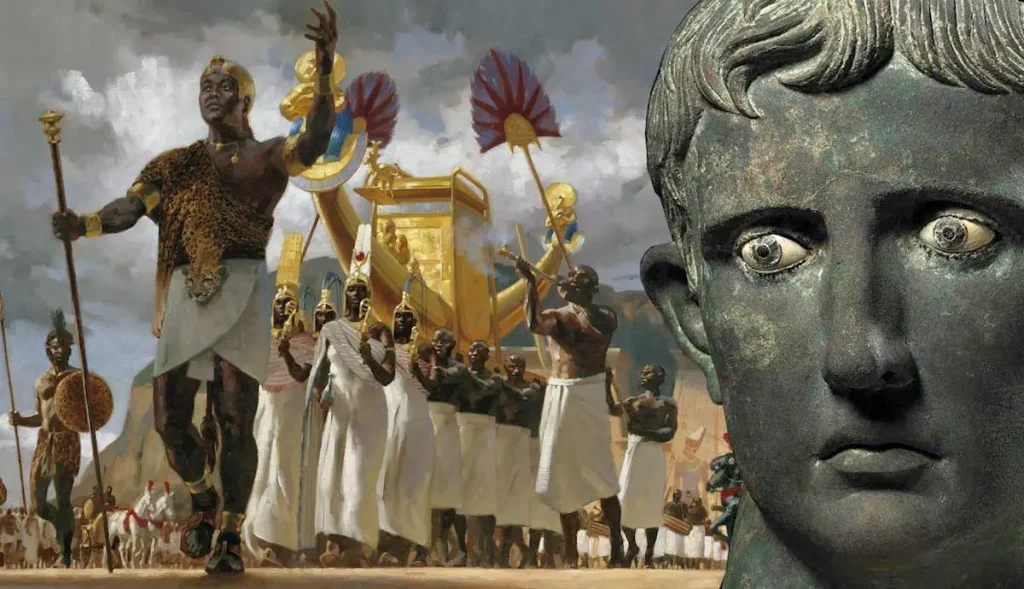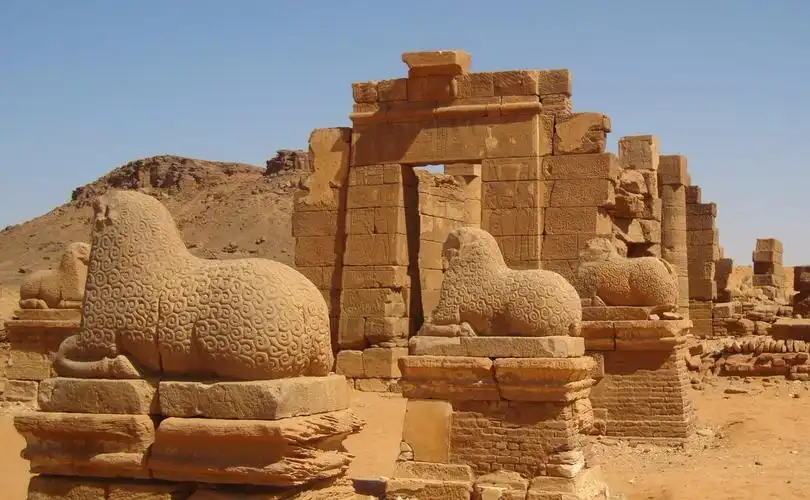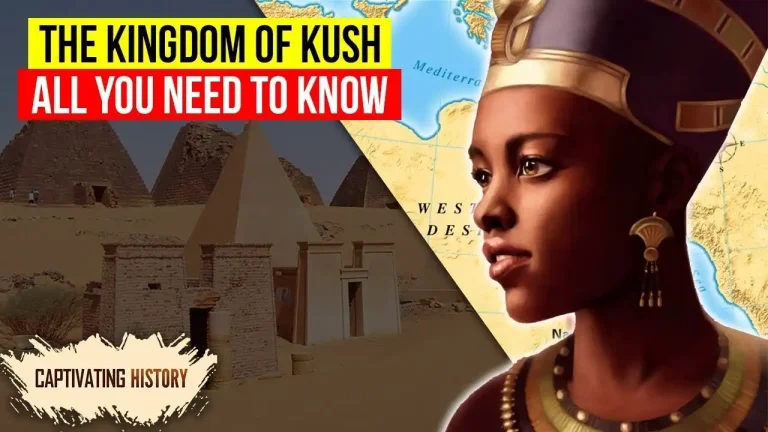The Kingdom of Kush was one of the most powerful civilizations in ancient Africa. Located in what is now known as Nubia, the kingdom flourished from around 2000 BCE until 350 CE, leaving behind a rich legacy of art, architecture, and culture. Despite its significance, the Kingdom of Kush remains a mystery to many people. In this article, we will uncover the secrets of this ancient kingdom, exploring its history, culture, and achievements.
II. Location of the Kingdom of Kush
A. Geographical location
The Kingdom of Kush was located in what is now known as Nubia, a region that stretches from modern-day southern Egypt to northern Sudan. It was situated along the Nile River, which provided the kingdom with fertile land and access to trade routes. The location of the Kingdom of Kush made it a strategic crossroads for trade between Africa and the Mediterranean.
B. Topography and climate
The topography of Nubia is characterized by a narrow strip of arable land along the Nile River, bordered by deserts to the east and west. The climate is hot and arid, with little rainfall. The Nile River, with its annual flood, provided the kingdom with water for irrigation and allowed for the cultivation of crops.
C. Influence of location on the Kingdom of Kush
The location of the Kingdom of Kush had a significant influence on its history and culture. The kingdom was able to establish itself as a major power in the region due to its control of the Nile River and its strategic location along trade routes. The Nile River also played a crucial role in the development of the kingdom’s agricultural economy. The harsh climate and difficult terrain of Nubia helped to shape the culture and way of life of the people of the Kingdom of Kush.

II. History of the Kingdom of Kush
A. Early history
The earliest known civilization in Nubia dates back to around 3000 BCE. This culture was centered around the city of Kerma, which was located in what is now northern Sudan. Around 2000 BCE, a new culture emerged in Nubia, known as the C
A. Early history (continued)
Group, which was characterized by its advanced pottery and metalworking techniques. This culture was eventually conquered by the Egyptians in the 16th century BCE.
B. The rise of the Kingdom of Kush
The Kingdom of Kush emerged in the 8th century BCE, following the decline of the Egyptian New Kingdom. The Kushites took advantage of Egypt’s weakened state to establish their own empire, centered around the city of Napata. The Kushite empire continued to expand throughout the 7th and 6th centuries BCE, eventually conquering Egypt and establishing the 25th dynasty.
C. The peak of the Kingdom of Kush
The peak of the Kingdom of Kush occurred during the reign of King Taharqa, who ruled from 690 to 664 BCE. Under Taharqa’s leadership, the kingdom expanded its borders and established diplomatic relations with neighboring civilizations. The Kingdom of Kush also became a center of art and culture, with many beautiful works of art and architecture produced during this time.
D. Decline and fall of the Kingdom of Kush
The Kingdom of Kush began to decline in the 4th century BCE, due to a combination of factors including economic decline, internal conflict, and invasion by the Kingdom of Axum. The kingdom was eventually conquered by the Kingdom of Axum in the 4th century CE, ending its long and illustrious history.

III. Society and Culture of the Kingdom of Kush
A. Political structure
The Kingdom of Kush was a monarchy, with a king at the top of the political hierarchy. The king was assisted by a council of advisors, and the kingdom was divided into administrative regions known as nomes. The Kushite government was characterized by its centralization and bureaucracy.
B. Religion
The religion of the Kingdom of Kush was polytheistic, with a pantheon of gods and goddesses who were worshipped through temples and rituals. The most important god was Amun, who was believed to reside in the city of Napata. The Kushite religion also incorporated elements of Egyptian religion, due to the kingdom’s close ties with Egypt.
C. Art and architecture
The Kingdom of Kush produced a rich and diverse body of art and architecture, including monumental sculptures, elaborate jewelry, and finely crafted pottery. The most famous architectural works of the Kushite period are the Nubian pyramids, which were built as tombs for the kings and queens of the kingdom.
D. Education and literacy
The Kingdom of Kush was known for its high level of literacy and education. The Kushites developed their own script, known as Meroitic, which was used for writing documents and inscriptions. The kingdom also had a well-developed system of education, with schools and universities throughout the empire.
E. Trade and commerce
The Kingdom of Kush was a major center of trade and commerce, due to its strategic location along trade routes between Africa and the Mediterranean. The kingdom exported gold, ivory, and slaves, and imported luxury goods such as wine and textiles. The Kushites also established diplomatic relations with neighboring civilizations, including Egypt, Greece, and Rome.

IV. Achievements of the Kingdom of Kush
A. Pyramids
The Nubian pyramids are one of the most impressive architectural achievements of the Kingdom of Kush. These pyramids were built as tombs for the kings and queens of the kingdom, and were constructed using a combination of mudbrick and stone. The Nubian pyramids are smaller and steeper than the more famous pyramids of Egypt, and are distinguished by their unique architectural style.
B. Iron production
The Kingdom of Kush was known for its advanced ironworking techniques, which allowed the kingdom to produce high-quality iron weapons and tools. The Kushites were also skilled in the smelting
and refining of iron, and were able to produce large quantities of iron ore from their mines. This allowed the Kushites to establish a thriving economy based on iron production and trade.
C. Art and culture
The Kingdom of Kush was also known for its rich and diverse art and culture. The Kushites produced a wide range of art objects, including pottery, jewelry, and sculptures. The kingdom was also a center of music and dance, with many musicians and dancers performing at festivals and ceremonies.
D. Education and literacy
The Kingdom of Kush was highly literate, with a well-developed system of education. The Kushites developed their own script, known as Meroitic, which was used for writing documents and inscriptions. The kingdom also had a well-established system of education, with schools and universities throughout the empire.
E. Trade and commerce
The Kingdom of Kush was a major center of trade and commerce, due to its strategic location along trade routes between Africa and the Mediterranean. The kingdom exported gold, ivory, and slaves, and imported luxury goods such as wine and textiles. The Kushites also established diplomatic relations with neighboring civilizations, including Egypt, Greece, and Rome.

V. Legacy of the Kingdom of Kush
The legacy of the Kingdom of Kush can still be seen today in the architecture, art, and culture of the region. The Nubian pyramids, the most iconic symbol of the kingdom, continue to attract visitors from around the world. The art and artifacts produced during the Kushite period can be found in museums and collections throughout the world, and provide valuable insights into the culture and civilization of ancient Nubia.
The Kingdom of Kush also played an important role in the history of Africa and the Mediterranean world. The kingdom’s strategic location and economic power allowed it to establish diplomatic relations with neighboring civilizations, and to play a significant role in the development of trade and commerce in the region.
Conclusion
In conclusion, the Kingdom of Kush was a powerful and influential civilization that played an important role in the history of Africa and the Mediterranean world. Despite its decline and eventual conquest by the Kingdom of Axum, the legacy of the Kushite period can still be seen today in the architecture, art, and culture of the region. Through its achievements in ironworking, art and culture, education, and trade, the Kingdom of Kush demonstrated the great potential of ancient Nubia and the richness of its civilization.
